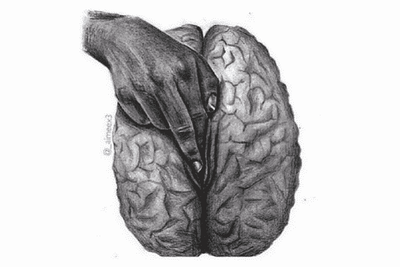Although hundreds of thousands of orgasms happen across the world every day, science still doesn’t have a clear answer as to what they are and how they work, and what are the connections between brain and orgasm. To most scientists, orgasms are a new field of study and are considered a human phenomenon. Julia Heiman, director Kinsey Institute for Research in Sex, Gender and Reproduction says,
“The amount of speculation versus actual data on both the function and value of orgasm is remarkable.”
Although orgasms are common and widespread for the human population, when looking at women in particular it’s an entirely different story. Studies show that one in every four women in the United States have a hard time achieving orgasm. In addition, 5 to 10 percent of women are anorgasmic. This means that they’re unable to achieve orgasm at all.
Today, many scientists and health professionals alike have a heightened interest in studying the female orgasm.
What is an orgasm?
The definition of an orgasm for men and women differ, but the general definition for both sexes is “a compelling, brief event that is an integration of cognitive, emotional, somatic, visceral, and neural processes,” according to sexologist Komisaruk. The modern definition of an orgasm incorporates a variety of complex levels that differ based on gender. For example, men can only have one orgasm at a time before needing a rest period. While on the other hand, women can have multiple orgasms one after the other. While orgasms are biologically different, the general consensus between men and women when describing the feeling of orgasm are nearly identical.
When you experience an orgasm, there are several physical and neurological things that go on in your body. Physically, your heart rate increases to a similar rate of when you are exercising. Your breathing also gets quicker and heavier, increasing in speed as you near climax. For women, there is a pleasurable release of sexual tension that is accompanied by multiple contractions of the genital muscles. If a women is continually stimulated, she may very well experience multiple orgasms in a row. Some women may even ejaculate a clear fluid from the Skene’s glands that are located near the urethra. This is a rare occurrence, and usually happens with intense sexual excitement or during an orgasm.
Orgasms produce altered states of mind.
As scientists are continuing to study the orgasm and its effects on the human body, they have discovered new and interesting ways in which humans are neurologically affected by sexual pleasure. Many people describe having altered states of mind when they orgasm. Some have said they experience a feeling of loss of control, like their body is taking over. Other’s claim to have experiences related to that of being on controlled substances. When you orgasm, certain chemicals are released into your brain that also happen when you are on drugs, including dopamine and serotonin.
Sex scientist Georgiadis claims that having an orgasm offsets the brain functions that usually control your attention and behavior, causing you to feel like you’ve lost all control. “I don’t think orgasm turns off consciousness but it changes it,” Georgiadis says. This is a side effect of having an orgasm, but it is still debated as to whether it plays any role in the amount of pleasure one experiences. Georgiadis is currently working on this theory as a way to explain why anorgasmic women are unable to orgasm, and ways in which he can change that.
While many scientists have been studying the effects of orgasms on the brain and altered states of mind, they have also discovered that many people are able to use their brain alone to orgasm. These amazing discovery has triggered a lot of research into the field trying to figure out how certain people can orgasm with their brain alone, in the hopes that new discoveries about the science behind orgasms will be found.
You can orgasm with your brain alone.
There’s an incredible phenomenon that some people have experienced and other are trying to learn where women can orgasm with only their brain. This type of orgasm doesn’t not involve any physical stimulation whether it’s self-stimulation or from a partner.
When an orgasm occurs, thirty different areas of the brain are activated. This areas involve such things as touch, memory, reward systems, and even pain. Scientists and real women have discovered that these same areas can be activated and orgasm achieved with the power of thought. When Komisaruk studied a group of women’s brain activities while they fantasised about imagined clitoral touches and other arousal zones, he found that the exact same reactions were happening in the brain as when there were actual physical clitoral touches happening.
The only difference between a real orgasm and an imagined one is the amount of blood flow rushing to the genital areas, which Komisaruk found out has a lot less to do with pleasure than was originally thought. Even noticeable physical changes occurred during a thought powered orgasm including an increased heart rate, blood pressure, higher pain threshold, and the size of the pupil. They mimicked the same physical reactions one experiences when undergoing a traditional, physical orgasm.
The idea of there being a connection between thought and sexuality has been around since the early 1970’s when the Masters and Johnson research team began conducting experiments. The connection between thought and orgasm is most strongly found in the brains of women. Sex therapist Dr. Ian Kerner has said, “The brain is the most powerful sex organ.” While men are capable of climaxing through thought, it’s much less common and more difficult for them than women.
Bottom line.
The female orgasm has long been a mystery, but with the help of modern technology and an increased interest by scientists, we’re breaking down the barriers of the orgasm and gaining a better understanding of female sexuality. Orgasms have many effects on the body including an altered state of consciousness in the brain, and physical effects like rapid breathing and faster heart rate. The human brain is in fact the most powerful sex organ, and has the ability to induce an orgasm without any physical touch. For a healthy and happy sex life, it’s important for women to have a better understanding of orgasms and just how powerful their brain can be!
Sources:
- https://www.newscientist.com/article/mg18625033-900-genes-blamed-for-fickle-female-orgasm/
- https://www.newscientist.com/blogs/shortsharpscience/2010/11/pain-brain-regions-also-active.html










